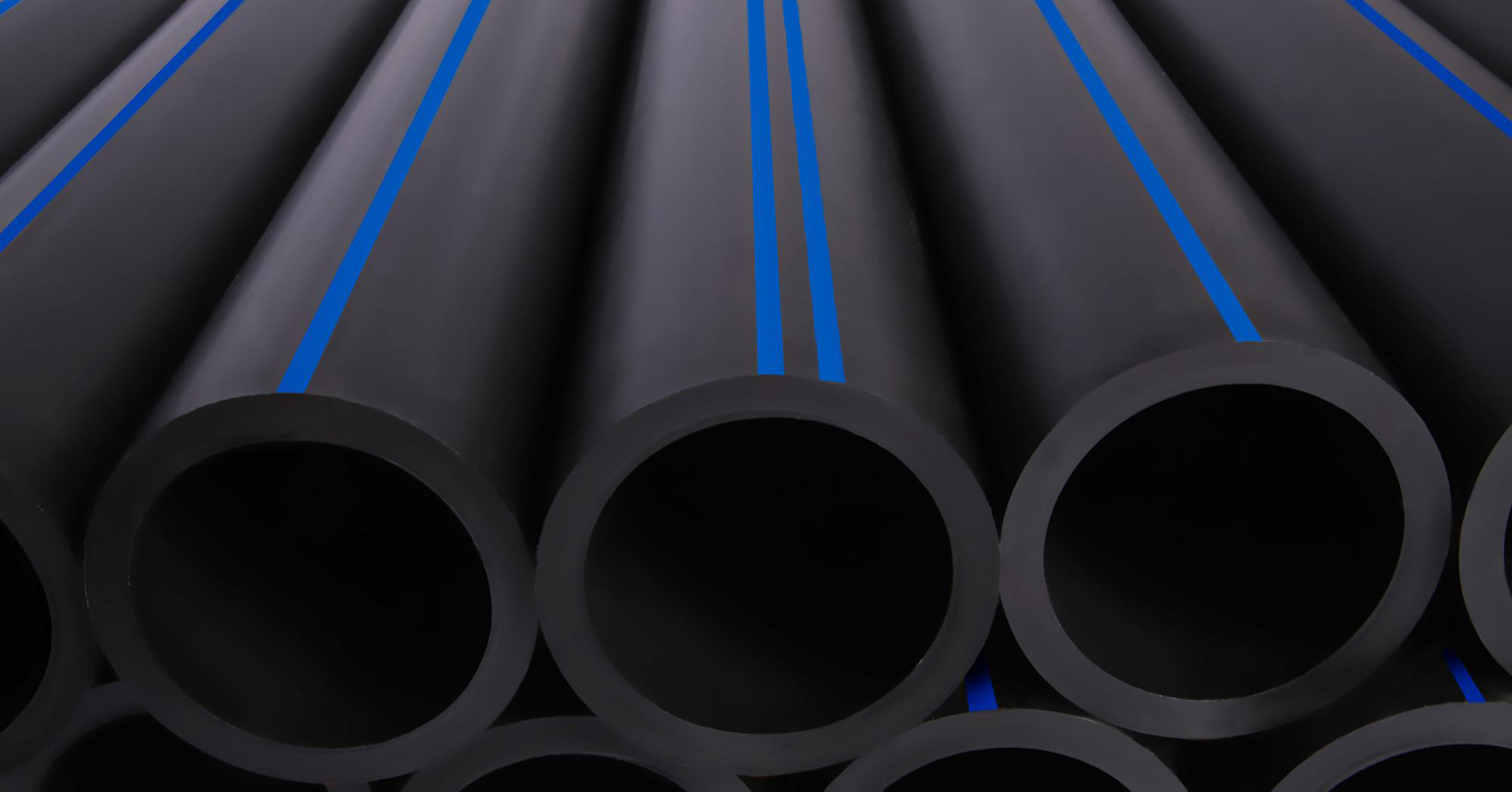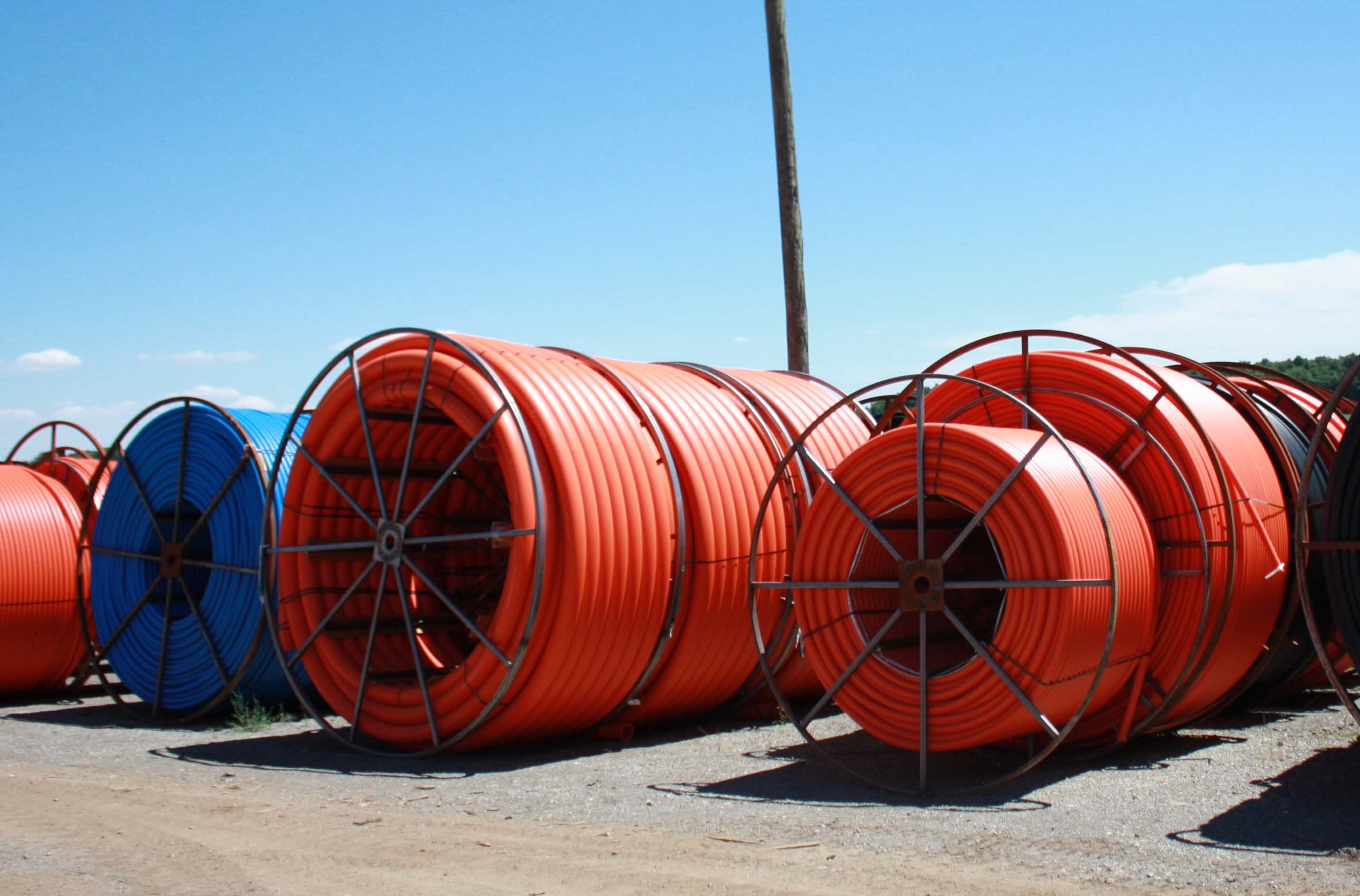Critical Benefits of custom hdpe pipe manufacturing Midland TX for Engineering Projects
Discover the Manufacturing Process Behind High-Quality HDPE Pipe and Its Applications
The manufacturing process of top quality HDPE pipes is complex and systematic. It starts with the choice of raw products that improve performance. Following this, ethylene undergoes polymerization to develop resin, which is after that formed through extrusion. Quality control is paramount, guaranteeing that the last product satisfies strict standards. Nevertheless, the journey of HDPE pipelines doesn't end with production. Their applications throughout various industries reveal a more comprehensive relevance worth examining.
Understanding HDPE: Features and Advantages

High-density polyethylene (HDPE) is a versatile thermoplastic understood for its durability and resistance to various environmental variables. This material exhibits outstanding tensile strength, making it suitable for requiring applications. Its low-density framework adds to a light-weight product, facilitating convenience of handling and installment. HDPE additionally showcases impressive resistance to chemicals, which lessens degradation when exposed to rough materials.
The material's low dampness absorption further improves its longevity, making it optimal for use in pipes and storage space tanks. Additionally, HDPE is immune to ultraviolet (UV) radiation, guaranteeing that items preserve their honesty even when revealed to sunshine. Its flexibility enables for the development of intricate forms without jeopardizing stamina. The environmentally friendly nature of HDPE, typically originated from recycled products, adds to its charm, promoting lasting practices in production. On the whole, these residential or commercial properties and benefits make HDPE a favored selection for numerous commercial and consumer applications.
Raw Material Choice for HDPE Manufacturing
The choice of raw products for HDPE manufacturing is important to verify the final item satisfies the desired specifications and quality standards. High-density polyethylene (HDPE) is mainly generated from polymerized ethylene, derived from nonrenewable fuel sources such as natural gas or petroleum. The top quality of these feedstocks substantially affects the mechanical and thermal homes of the final HDPE.
Ingredients likewise play a substantial function in boosting HDPE's efficiency, consisting of antioxidants, UV stabilizers, and colorants, which improve longevity and resistance to ecological elements. The option procedure must consider not only the chemical structure of the raw materials yet likewise their handling features to assure reliable production.
The sourcing of raw products must prioritize sustainability and compliance with ecological regulations, as liable techniques are necessary in today's market. Ultimately, careful raw product selection lays the foundation for generating top quality HDPE pipelines suitable for varied applications.
The Extrusion Refine: Forming HDPE Pipe
The extrusion process plays a crucial role in shaping HDPE pipelines, starting with thorough product prep work techniques that ensure ideal circulation and consistency. Equally crucial is the design of the die, which straight affects the last dimensions and surface area high quality of the pipe. Together, these aspects contribute significantly to the effectiveness and top quality of HDPE pipeline production.
Product Prep Work Techniques
Effective production of HDPE pipelines starts with meticulous material prep work strategies, specifically the extrusion procedure. Throughout this phase, high-density polyethylene material is first dried to eliminate moisture, making sure excellent circulation attributes. The material is after that fed into the extruder, where it goes through heating and melting, transforming right into a viscous state. This heating procedure is meticulously controlled to maintain the product's honesty and performance. The liquified HDPE is required with a die, shaping it right into a constant pipe type. Proper temperature administration throughout extrusion is crucial, as it straight impacts the product's buildings and the end product quality. As soon as shaped, the HDPE pipe is cooled and reduced to specified sizes, prepared for subsequent handling and applications.
Die Style Importance
Precision in die layout plays an essential duty in the extrusion process of HDPE pipelines. The die functions as the final shaping tool, directly influencing the pipe's measurements, wall density, and surface area coating. A well-designed die guarantees consistent product circulation, minimizing problems such as abnormalities and weak points. The geometry of the die must be maximized to accommodate the details homes of HDPE, including its viscosity and thermal actions during extrusion. Furthermore, the cooling rate of the product as it goes through the die can substantially influence the pipeline's structural honesty. Consequently, investing in sophisticated die technology is important for makers aiming to produce top quality HDPE pipes that satisfy market requirements and consumer assumptions.
Quality Control Actions in HDPE Production
Although various aspects affect the quality of HDPE pipe production, reliable quality assurance actions are critical to ensure uniformity and integrity in the final item. Key quality control methods include rigorous product assessment, validating that the raw polyethylene satisfies well established standards for pureness and density. During the extrusion process, specifications such as temperature, pressure, and cooling time are closely kept an eye on to preserve dimensional precision and structural honesty
Furthermore, post-production testing is necessary; makers commonly carry out hydrostatic tests to analyze the pipeline's strength and resistance to stress. Visual inspections for surface area flaws additionally improve quality guarantee. Certification from appropriate standards companies, like ASTM or ISO, offers an added layer of reputation. By implementing these detailed high quality control measures, makers can reduce flaws, boost performance, and make certain that the HDPE pipes meet the certain requirements of different applications, inevitably leading to customer satisfaction and count on in the item.
Applications of HDPE Pipeline Across Industries
HDPE pipelines are made use of across numerous sectors because of their resilience and convenience. In water distribution systems, they ensure reliable delivery, while in wastewater administration, they provide trusted solutions for waste transport. Furthermore, farming watering networks gain from HDPE's resistance to corrosion and versatility, making it an ideal option for modern-day farming techniques.

Water Circulation Equipments
A significant variety of industries rely upon high-density polyethylene (HDPE) pipelines for efficient water distribution systems. Understood for their sturdiness and resistance to deterioration, HDPE pipes are commonly made use of in local supply of water networks, farming watering, and commercial applications. Their lightweight nature facilitates simple handling and installation, reducing labor prices and time. Additionally, HDPE pipes can fit various pressure levels, making them appropriate for both low and high-pressure systems. hdpe pipe suppliers Midland TX. The versatility of the material permits seamless integration right into existing facilities, lessening the requirement for substantial excavation. Additionally, HDPE's resistance to chemical leaching warranties that the water supplied stays risk-free and tidy, making it an excellent selection for keeping the high quality of safe and clean water throughout numerous industries
Wastewater Monitoring Solutions
Effective water circulation systems likewise lead the way for innovative wastewater administration services, where high-density polyethylene (HDPE) pipelines play a significant role. Distinguished for their resilience and resistance to corrosion, HDPE pipes are excellent for transferring wastewater in different settings. Their versatility enables very easy installment in complex settings, lessening the requirement for considerable pipe saddle excavation. Additionally, HDPE's smooth interior surface area lowers rubbing, boosting circulation prices and performance. These pipes are likewise immune to chemical leaching, guaranteeing that impurities do not jeopardize the surrounding atmosphere. Industries, districts, and treatment facilities increasingly rely on HDPE pipes for their reliability and durability, making them a favored choice for modern wastewater monitoring systems. This adaptability underscores the vital relevance of HDPE pipes across various applications.
Agricultural Irrigation Networks
Agricultural irrigation networks profit substantially from making use of high-density polyethylene (HDPE) pipes, which provide reliable and trusted water shipment to crops. HDPE pipelines are light-weight, making them simple to carry and install, while their adaptability permits for numerous setups in varied surfaces. These pipes show exceptional resistance to corrosion, chemicals, and UV radiation, ensuring resilience in rough agricultural environments. Furthermore, their smooth indoor surface lessens rubbing loss, enhancing water circulation and decreasing power costs related to pumping. The longevity of HDPE pipelines, usually surpassing half a century, contributes to lower maintenance and substitute expenses. As a result, farmers increasingly rely upon HDPE pipelines to enhance irrigation effectiveness and advertise sustainable farming practices, inevitably resulting in improved crop returns and source conservation.
Future Fads in HDPE Pipe Modern Technology
As the demand for lasting and effective framework grows, innovations in HDPE pipe innovation are poised to transform different sectors. Emerging trends consist of the combination of clever innovations, such as sensing units and IoT capabilities, which help with real-time surveillance of pipe problems, lowering maintenance prices and protecting against leaks. Furthermore, the advancement of innovative manufacturing strategies, such as 3D printing, is allowing the manufacturing of facility, tailored pipe designs that deal with certain project needs.
In addition, the concentrate on recycling and circular economic climate techniques is driving the advancement of HDPE pipelines made from recycled products, boosting sustainability. Improved jointing techniques, such as electro-fusion and mechanical fittings, are likewise enhancing installation efficiency and reliability. Lastly, the expanding emphasis on environmental policies is pushing makers to take on greener production processes, ensuring that HDPE pipes not only fulfill industry standards however likewise cultivate a more lasting future for framework development.
Regularly Asked Inquiries
Just How Does HDPE Contrast to Various Other Plastic Materials?
HDPE outshines several other plastic products relating to sturdiness, chemical resistance, and flexibility. Its reduced density and high tensile stamina make it optimal for numerous applications, often going beyond options in both efficiency and longevity.
What Are the Ecological Influences of HDPE Production?
The ecological impacts of HDPE manufacturing consist of greenhouse gas emissions, power consumption, and possible pollution from producing procedures. In addition, improper disposal can cause dirt and water contamination, raising problems about long-lasting eco-friendly results.
Can HDPE Pipes Be Reused?
Yes, HDPE pipelines can be reused. Several centers approve utilized HDPE for processing, changing it into new products. This recycling adds to sustainability efforts, lowering plastic waste while saving sources and power in the manufacturing cycle.
What Is the Lifespan of HDPE Pipes?

How Do Temperature Variations Affect HDPE Pipe Efficiency?
Temperature variations considerably affect HDPE pipeline efficiency, affecting versatility and stamina. Heats can result in softening, while reduced temperature levels may create brittleness, eventually influencing the pipeline's toughness and suitability for numerous applications in diverse settings.